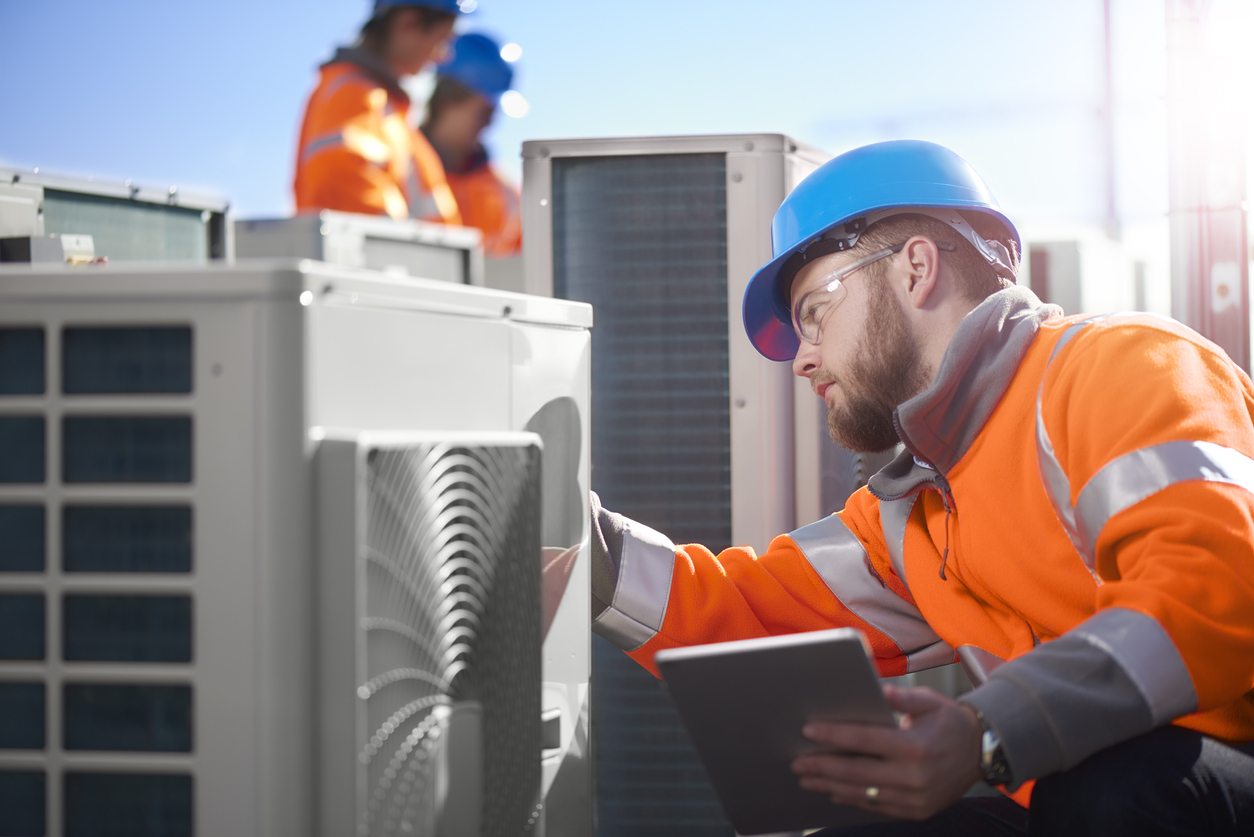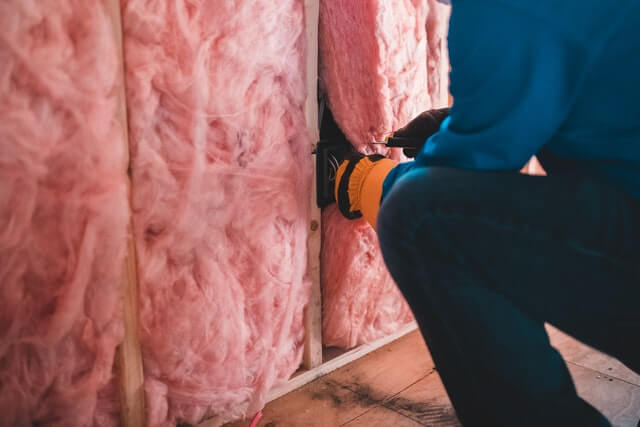Whether you’re a contractor, homeowner, or real estate investor, the HVAC system in your property must be maintained in order to keep it in good working order. From the hot summer months to the chilly temps of winter, a healthy HVAC system ensures that indoor temperatures are comfortable at all times. Read on to learn more about how these systems work, key components, and the costs and processes required to keep everything well-maintained.
What is HVAC?
You’ve probably seen the term HVAC plenty of times, but do you know what it means? This acronym stands for “Heating, Ventilation, and Air Conditioning.” This crucial system moves air between the indoor and outdoor areas of a building while keeping it heated or cooled. You rely on your HVAC system to keep your home nice and cool during summer and toasty warm during the frigid winter months. These systems are also responsible for filtering and cleaning indoor air, reducing allergens, and keeping the air in your home healthy. An HVAC system can also help to maintain good humidity levels, and all HVAC systems consist of several components that work together to keep things comfortable. If these components aren’t properly maintained, that can result in a breakdown and can cost a pretty penny in terms of replacing parts or paying for heating or AC repairs.
How Do HVAC Systems Work?
In order to ensure good HVAC maintenance, you’ll need to know how everything works. Even if you have an older model system, the basic principles remain the same. Your furnace uses oil, electricity, or natural gas to heat the air. Furnaces also include something called a heat exchanger, which is the part that’s responsible for heating up the air to get it to the right temperature. Most furnaces are found in attics, basements, or specially designated closets. Air conditioners cool the air, and the main AC unit is installed outside of the home. The AC uses electricity and a coolant liquid to reduce the indoor air temperature as it sends the hot air outside and brings cold air inside. All HVAC systems use ductwork, which is a system of “tunnels” responsible for carrying air throughout a home. The HVAC pumps hot or cold air through the ductwork and out of vents into each room. Finally, a thermostat is the main control center of any HVAC system. This component is where you adjust the temperature and change it to your liking and turn the system on or off.
Key Components and Average Maintenance Costs
Now that you know more about the key components of an HVAC system, let’s take a closer look at each one and find out more about the overall maintenance costs:
- Furnace: If you’re not getting warm air in the winter, it’s probably an issue with your furnace. If the furnace is still under warranty, maintenance costs will be much lower. However, if the furnace isn’t currently covered, you can expect to pay anywhere from $150 to $400 to get it repaired. Common issues include a cracked heat exchanger, issues with the motor, or wiring and electrical issues.
- Air Conditioner: Getting your central air unit repaired can vary greatly in terms of cost. It really depends on the issue and what is causing your AC to malfunction. If it’s a problem with your compressor, condenser, or running out of gas the cost can be a lot higher than if the unit simply needs to have the coolant refilled. Draining the condensation line should only set you back around $100. If it’s a more severe issue like a refrigerant leak, be prepared to spend anywhere from a few hundred dollars to $1,000 or even more. Much of the cost depends on the size of the unit and the severity of the problem.
- Thermostat: In most cases, you won’t have that many issues with your thermostat unless it’s older and has simply broken down as a result of wear and tear. Improperly installed thermostats can malfunction, so you might have to pay an electrician to come and re-wire the unit. On average, thermostat repair will only set you back around $100-$300. You can also opt for a new unit that’s more high-tech which can cost a few hundred dollars to purchase and install.
Types of HVAC Systems
When it comes to heating and cooling your home, there are a few different systems you can choose to install or that may already be installed in your property. Some of the most common examples include:
- Standard systems: A standard HVAC system consists of a furnace, air handler, AC unit, thermostat, and ductwork. Standard systems can be powered by natural gas, oil, or electricity for the heat. Most standard systems use electricity for the air conditioning unit. These are known as “split systems” since some components are outside and others are installed inside of the home.
- Geothermal energy: Using the stable temperatures of the earth to help facilitate heating and cooling, geothermal systems are becoming a popular choice for many homeowners. Water that contains refrigerant is circulated through pipes that are installed in water or directly in the ground. These pipes either collect or shed heat, depending on the season. The system depends on the constantly moderate temperatures of the ground to ensure that heat is “dumped” in the summer and collected in the winter. Using geothermal energy is up to four times more efficient than a traditional HVAC system, which can save you a significant amount of money on energy costs.
- Zoned systems: Another popular choice for homes is a zoned system, which gives you more control over the rooms you want to heat and cool. These HVAC systems use controlled zone valves in the ductwork, so you only get hot or cold air when and where you need it.
The Benefits of Installing an HVAC System
Installing air conditioning systems and heating units will increase the value of your home and the overall enjoyment of your property. Without an HVAC system, your home can become unbearably hot in the summer and dangerously cold in the winter. Using an HVAC system also improves indoor air quality by filtering and circulating the air. Make sure you change your filter monthly to ensure the best quality air possible. With a high-quality HVAC system, you’ll have total control over the comfort level in your home. Young children and the elderly can especially benefit from an air conditioning system to keep them comfortable and cool.
Installation and/or Replacement Costs
The cost of a new HVAC system can vary widely, and one major factor is the size of your home or building. The larger the property, the more expensive a new install will be. Some homes and commercial buildings may need to have two or more air conditioner units installed just to keep the entire facility cool and comfortable. A replacement of an HVAC system may be less since there’s already ductwork and other existing components. An HVAC installation can range from $3,250 to $12,586 for an average 2,000 square-foot home. This cost depends on the type of system you choose, the climate where you live, and if any ductwork needs to be installed or replaced. Be sure to get several estimates before you agree on the price for an HVAC system new install or replacement. Replacing individual components will typically cost much less than installing an entirely new system. Check if your HVAC is covered by your homeowner’s coverage policy.
HVAC Efficiency
It’s important to make sure that your central air unit and furnace are operating efficiently. Not only will this ensure that your home is at the optimum temperature level, but it will also save you money in the long run. An efficient unit should run smoothly and cost you less each month on your energy bill. You can improve the efficiency of your system by changing the air filter every month and getting the system inspected at least once a year. Check all components for any signs of visible damage. When you have an efficient system, you’re reducing your total energy consumption. This is not only good for you, but it’s also good for the planet, too. Since geothermal energy is a renewable resource, this is one of the most efficient HVAC systems available today. Talk to a local provider to find out if it’s available in your area and for your particular home.
Heat and cooling load calculations are an important aspect of HVAC maintenance as they can enhance the efficiency of your system. These calculations determine the precise amount of heating and cooling your HVAC system needs to provide for optimal comfort and energy efficiency. By evaluating factors such as your home’s insulation, size, and local climate, you can adjust your HVAC system’s operation to meet your specific needs. Regularly updating these load calculations, especially when making changes to your home, like adding insulation or expanding living spaces, ensures that your HVAC system operates at peak performance, reducing energy consumption and extending the life of your equipment.
HVAC Providers and Contractors
When it comes to good HVAC Maintenance, you need to choose a contractor you can trust. They can come and do an inspection of your system and offer advice on how you can make it run more efficiently. You may be able to make a few simple repairs yourself, but it’s always recommended that you use a reputable professional whenever possible. Check customer reviews to find an HVAC service provider or contractor in your area with a reputation for the quality of service or look for HVAC contractor insurance. Schedule inspections on a regular basis to make sure that your central air unit and furnace are working the way they should. When you practice regular HVAC Maintenance, your system will keep you and your family comfortable for a long time to come.




